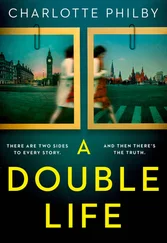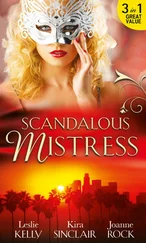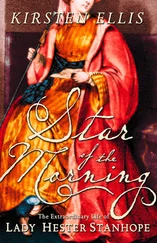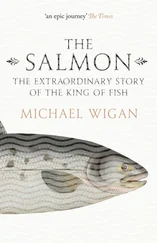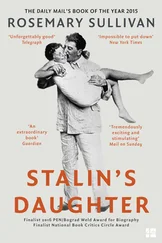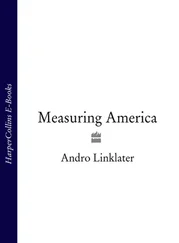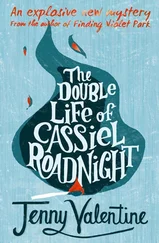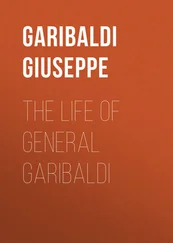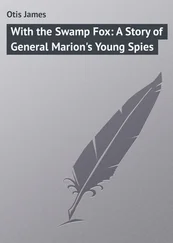A sharp divide soon opened up between the established settlements near the coasts and rivers, where the ground was already measured out by the proprietors for sale or rent, and the interior where the poorer immigrants settled, often squatting rent-free on territory beyond the proprietors’ control. Banditti was the word commonly used to describe these savage incomers, mostly Presbyterian Scots-Irish from Ulster and Germans from the Palatine state in the Rhine valley, who occupied the land as though it were their own. William Byrd of Virginia compared them to “the Goths and Vandals of old,” while in Pennsylvania James Logan, in charge of the Penn family’s affairs, complained of the disrespect “these bold and indigent strangers” showed for eighteenth-century conventions, “saying as their excuse when challenged for titles [to property], that we had solicited for colonists and they had come accordingly.”
Joseph Wilkinson had money enough to buy a plantation of almost nine hundred acres in Calvert County, a thumb of coastal land bordered on the east by Chesapeake Bay and on the west and south by the slow waters of the Patuxent River as it broadened into the bay. The location ensured that his family would grow up with values quite distinct from the egalitarian and rebellious impulses of those farther west.
The Calverts, who owned Maryland, maintained better control than their neighbors the Penns. As early as 1718, the assembly, under pressure from Charles Calvert, the earl of Baltimore and “Absolute Lord and Proprietary of this Province of Maryland,” passed legislation requiring each county to employ a team of nine public surveyors to parcel out the land. The best of it was sold in large units, as much as ten thousand acres to the nobly born or well moneyed, but a hundred acres of indifferent soil were available free to a single individual who paid his or her own passage or worked for a number of years as an indentured servant. Although frequently breached, this plan proved surprisingly effective as social engineering and helped bring about the growth of a society with class distinctions as well-defined as in aristocratic England.
“The Manners of Maryland are somewhat peculiar,” a bemused John Adams observed in 1777 when he visited for the first time. “They have but few Merchants . . . The Lands are cultivated, and all Sorts of Trades are exercised by Negroes, or by transported Convicts, which has occasioned the Planters and Farmers to assume the Title of Gentlemen, and they hold their Negroes and Convicts, that is all labouring People and Tradesmen, in such Contempt, that they think themselves a distinct order of Beings. Hence they never will suffer their Sons to labour or learn any Trade, but they bring them up in Idleness or, what is worse, in Horse Racing, Cock fighting, and Card Playing.”
This was an exaggeration—the rapidly growing port of Baltimore had many merchants, and industrial enterprises such as the giant water mills erected by the Ellicott brothers on the Patapsco River in the 1760s were creating a middle class. Nevertheless, the structure of colonial Maryland did remain remarkably feudal right up to the Revolution. To a New England lawyer such as Adams, it could only appear alien, but to James Wilkinson, who grew up in it, hierarchy appeared not only natural, but the proper way for society to be organized.
Stoakley Manor, the Wilkinsons’ plantation, lay beside a meandering river called Hunting Creek, about four miles north of Prince Frederick, the present county capital. Other properties in Calvert County were more than three times its size, but Stoakley was large enough to justify the family’s belief that they belonged to the distinct order of gentlemen. They were related to the Mackalls, the richest family in the county, and Joseph Wilkinson’s son, another Joseph, married Althea Heighe, whose siblings and cousins owned seven or eight other plantations. It must have seemed a good match at the time. The young Joseph had inherited Stoakley in 1734 on the death of his father, and Althea, generally known as Betty, had 150 acres of her own, as well as “one feather bed and furniture” left to her by her wealthy father.
Although some of the land was devoted to wheat and other crops, tobacco underpinned Maryland’s economy, and to such an extent that until 1733 when paper money was introduced, tobacco leaf was an official currency alongside silver dollars and gold sovereigns, even for such payments as rents, taxes, and fines. Throughout the 1730s, the international demand for it rose, so that within a decade prices doubled. For a time, all tobacco planters prospered, the Wilkinsons among them. But shortly before young Joseph married Betty Heighe and took over the running of Stoakley, the boom began to tail away. By the time that their son James was born in 1757, the youngest of four children, the family was in debt, and the plantation heavily mortgaged.
Any one of several difficulties could have overwhelmed an inexperienced young planter. From the 1740s, Maryland’s producers had to accept increasingly complex bureaucratic controls introduced by the assembly to improve the quality of the province’s tobaccco. Their French customers caused a sharp fall in prices by manipulating the market, while Dutch merchants abruptly changed fashion from the bright- flavored tobacco known as Sweetscented to the heavier Oronoco leaf. But in the long term, the most crucial decision facing every tobacco planter during this period was whether to rely on European convicts and indentured servants for labor or to switch to the new fashion for African slaves. Perhaps Joseph Wilkinson had scruples about using slaves or perhaps he overstretched himself financially in buying them at thirty-five pounds sterling (approximately $175) a head; perhaps he had been brought up as an idle gentleman with no head for business, or perhaps he had gambled and lost heavily on cockfighting or cardplaying. No record of bankruptcy exists, but the estate was broken up and sold soon after Joseph’s premature death in 1764 at the age of thirty-three.
James Wilkinson was just six years old when Joseph died. Into his absence, the son projected the picture of the ideal gentleman, and of the way he should behave under duress. “The last words my father spoke to me,” Wilkinson declared, “were ‘My son, if you ever put up with an insult, I will disinherit you.’ ” Whether the dying Joseph actually uttered such baleful words is questionable— as the younger son, James was not the heir— but the idea they expressed was branded deep into his son’s personality. In adult life, the merest hint that Wilkinson had not behaved properly would be met with an explosion of anger and, frequently, a challenge to settle the matter with sword or pistol. His violent reaction, almost hysterical at times, must have had its roots in the psychological pressure of seeing his father ground down by debt.
In the absence of banks, Maryland planters borrowed from each other— Stoakley’s broad acres ended up in the hands of three of Calvert County’s most prominent families. Thus the creditors Joseph Wilkinson was staving off would have been his friends. Among the excuses he must have offered them, the deceits he must have practiced, and the slow, corrosive experience of letting down those who had trusted him most, the one thing he evidently clung to, the single asset that no one could take from him, was his standing as a gentleman. In his son’s Memoirs , the references to his father suggest a man grown almost pathologically touchy about his social standing. The value was passed on intact to his son, who would in his turn always believe that the image of respectability excused the reality of betrayal.
Nevertheless, Joseph Wilkinson’s faith in the social advantages of being a gentleman had some justification. Although the plantation had to be sold to meet his debts, his creditors showed forebearance. His widow, Betty, was allowed to keep the Heighe land she had inherited, and some acres of Stoakley. It was not much, but in time the property gave her elder son, Joseph Wilkinson III, sufficient standing to marry Barbara Mackall. By 1783 Barbara’s inheritance from her wealthy father had allowed her husband to become the owner of almost six hundred acres and a gristmill. The two Wilkinson daughters, Elizabeth and Mary, also survived, each marrying a local farmer and raising a family. It was the youngest child, the impressionable James, who found it hardest to recover from the catastrophe.
Читать дальше



